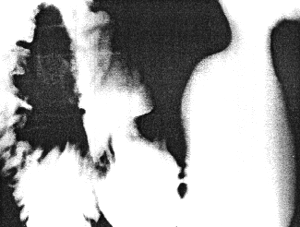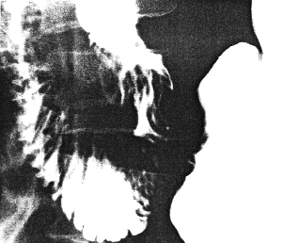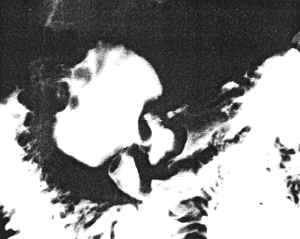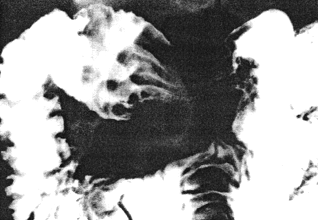


Go to chapter: 1 | 2 | 3 | 4 | 5 | 6 | 7 | 8 | 9 | 10 | 11 | 12 | 13 | 14 | 15 | 16 | 17 | 18 | 19 | 20 | 21 | 22 | 23 | 24 | 25 | 26 | 27 | 28 | 29 | 30 | 31 | 32 | 33 | 34 | 35 | 36 | 37 | 38 | 39
Chapter 38 (page 191)




Go to chapter: 1 | 2 | 3 | 4 | 5 | 6 | 7 | 8 | 9 | 10 | 11 | 12 | 13 | 14 | 15 | 16 | 17 | 18 | 19 | 20 | 21 | 22 | 23 | 24 | 25 | 26 | 27 | 28 | 29 | 30 | 31 | 32 | 33 | 34 | 35 | 36 | 37 | 38 | 39
Chapter 38 (page 191)
 |
Fig. 38.1 A. Case J.S. Partial contraction of pyloric sphincteric cylinder. Base of duodenal bulb normal |
 |
Fig. 38.1 B. Case J.S. Maximal contraction of sphincteric cylinder. Umbrella-like defect base of bulb, continuous with longitudinal mucosal folds in pyloric canal |
Case 38.2 A.A., 20 year old male, a known case of duodenal ulceration, had received
anti-ulcer therapy for the preceding year. Because of a recurrence of symptoms
radiographic examination was requested.
Several prominent, tortuous mucosal folds were seen in the pyloric sphincteric cylinder
while it was relaxed; the base of the duodenal bulb appeared normal, but there was a
possible ulcer near its apex (Fig. 38.2A). During maximal contraction of the
pyloric sphincteric cylinder an umbrella-like defect appeared in the base of the duodenal
bulb, continuous with longitudinal gastric mucosal folds stretching through the fully
formed pyloric canal (Fig. 38.2B). The case was diagnosed as prolapse of
gastric mucosa and probable active duodenal ulceration. Control double contrast
radiographic examination a month later failed to show the prolapse. At this examination
administration of an anticholinergic substance relaxed the gastric walls and insufflation
of air caused luminal distension, factors which prevented the sphincteric cylinder from
contracting.
 |
Fig. 38.2 A. Case A.A. Prominent, tortuous mucosal folds in relaxed pyloric sphincteric cylinder. Base of duodenal bulb normal. Possible duodenal ulcer |
 |
Fig. 38.2 B. Case A.A. Maximal contraction of sphincteric cylinder. Umbrella-like defect base of bulb, continuous with longitudinal mucosal folds in pyloric canal |
Previous Page | Table of Contents | Next Page
© Copyright PLiG 1998